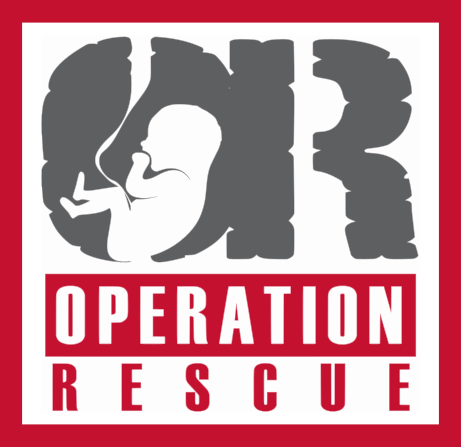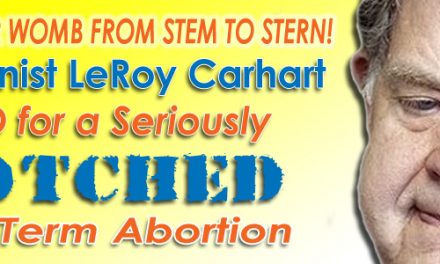Details emerge of a secret criminal plot to commit illegal late-term abortions in New Jersey and Maryland
By Cheryl Sullenger
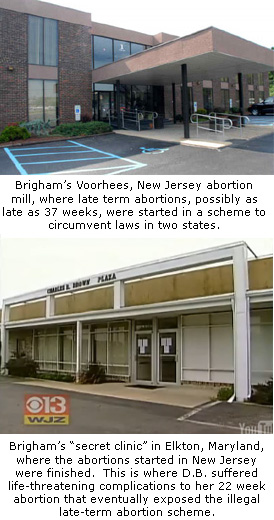
She is only eighteen, but she is lucky to be alive. The ordeal that nearly cost her life began in early August. D.B., as records identify her, was on a popular brand of birth control pills that limited the number of periods, so she was unaware that the pills had failed until her pregnancy was advanced. On August 9, 2010, D.B. went to American Women’s Center in Voorhees, New Jersey, and discovered she was 21.5 weeks pregnant.
What happened next led to a dramatic abortion clinic raid, the suspension of the medical licenses of three abortionists, and launched investigations that span four states. News of the discovery of a multi-state illegal late-term abortion scheme has shaken the abortion industry to its crumbling foundations.
Authorities believe that if D.B. had not suffered her terribly botched abortion, the dangerous late-term abortion ring would still be one of the abortion cartel’s dirtiest of secrets.
Documents paint a shocking picture
Operation Rescue received 302 pages of documents from the State of New Jersey on September 9, 2010, through an open records request. The documents tell a shocking story of a well-planned conspiracy to circumvent abortion laws, evade discovery of the unlicensed practice of medicine, and deceive women and authorities who have long suspected illegal activity at the chain of clinics operated by troubled abortionist Stephen Chase Brigham.
The documents were related to a New Jersey complaint against Brigham filed on September 8, 2010, that demanded the suspension of his medical license after D.B.’s serious late-term abortion injuries caught the attention of the police as well as physicians at Johns Hopkins Medical center where D.B. was eventually treated. Brigham has since agreed to a suspension effective September 15, to give him more time to present his case to the New Jersey State Board of Medical Examiners, (NJBME), at its scheduled meeting on October 13, 2010.
Brigham’s need to evade the law
The time-line of events actually began in January, 2010, when Brigham, who is not licensed to practice in Maryland, opened a secret office in a rented medical space in Elkton, Maryland. This clinic was not advertised under Brigham’s American Women’s Services, his four-state empire of 15 known abortion mills. Documents show that the Elkton facility’s paperwork often bore the name Grace Medical Services, but the people that worked there simply referred to it as Elkton. (See D.B. AWS Record, p. 30) The purpose of this under-the-radar office was to complete second and third trimester abortions that were illegally initiated at Brigham’s Voorhees, New Jersey, headquarters.
New Jersey law states that abortions can only be done up to 14 weeks at clinics not licensed as ambulatory surgical centers or hospitals. (N.J.A.C. § 13:35-4.2) The upper limit for any abortion in New Jersey is 18 weeks gestation. Brigham’s clinics are not licensed as ambulatory surgical centers, but that did not stop him from beginning abortion procedures there on women as late in their pregnancies as 36 weeks, according to his own records. (See Elkton Patient Logs)
According to interviews conducted by the Maryland Board of Physicians, (MDBP), with those involved in D.B.’s abortion, Brigham would, in spite of the law, see women who were beyond 14 weeks at his Voorhees, NJ clinic, where he would inject digoxin into the baby’s heart in order to initiate fetal demise, (in other words, kill the baby), then insert laminaria, thin sticks of seaweed that slowly expand to begin the cervical dilation process. He would also prescribe medications there. The women would be told to report to the Voorhees clinic the following morning where they would be taken to another undisclosed location for the completion of their abortions.
In June, 2010, suspecting illegal late abortions were being done by Brigham in Voorhees, the New Jersey Deputy Attorney General sent Brigham a list of questions that were was supposed to be answered in writing under oath. Brigham sent back a letter dated June 30, 2010, asking for additional time, but also addressing the question of late abortions. He wrote:
I looked briefly at the Demand and it appears that you may have the false impression that late-term abortions are being done by us in an office setting in New Jersey. This portion of your Demand I can directly answer now in this letter. We are not performing any abortions beyond 14 weeks in an office setting in New Jersey.
However, the documents supplied to patients and signed by them clearly show that abortions as late as 36 weeks are being started by Brigham in New Jersey.
Post-Laminaria Insertion Instructions given to patient D.B. in New Jersey clearly state, “You have just completed the first step of your abortion procedure…Remember that your abortion really begins when the laminaria is inserted into your cervix.” (D.B. AWS Record, pg. 21)
Brigham is charged with lying to the New Jersey Attorney General’s office about his late-term abortion activity in New Jersey. (See Pleadings, Count IV, p. 14)
We’re not in New Jersey anymore
Once the late-term women gathered at the Voorhees on the second day of their abortion procedure, they are assigned places in a caravan by Brigham, then led in their private vehicles to the Elkton facility where they are locked down for the remainder of their abortion.
Such was the case on August 13, the day of D.B.’s abortion. D.B., who was accompanied by her mother and boyfriend, was under the impression she was going to a clinic in Baltimore and was surprised to find herself in Elkton. In the caravan were some of Brigham’s New Jersey clinic workers, which were transported to Elkton to assist with the abortions. Other clinic workers from his Pennsylvania operations also met them in Elkton. It appears that there were no Maryland residents working at the Elkton clinic.
When they arrived at Elkton, the patients along with their accompanying family members were separated and placed into cubicles, or “booths” where they waited for the conclusion of the abortions. One of the other girls seemed to be in more pain than D.B. and the third abortion patient, so they took her first. Records show that this woman aborted twins that were 25 weeks gestation.
Nicola Riley

At about 11:00 a.m., D.B. was called back to the procedure room for her abortion. There, Brigham introduced her to Nicola Irene Riley, an African-American abortionist from Salt Lake City, Utah, that had recently been hired by Brigham. Riley’s first day on the job had been July 30, 2010, when she received training in third-trimester abortions on a woman who records show was 33 weeks pregnant. Riley reluctantly described that abortion as a “partial delivery.” The day of D.B.’s abortion was only Riley’s second day of work at Elkton. (MDBP Interview with Riley, p. 7)
Riley had been doing abortions for five years at another low-key abortion clinic in Salt Lake City known as SMP Family Medicine and Homecare, P.A., having been trained to do abortions through 20 weeks by experienced abortionists Colorado and Salt Lake City. She had agreed to work for Brigham every other weekend. She would spend Fridays in Elkton and Saturdays at the Baltimore and Frederick locations. Riley was trying to establish herself in Virginia, where she has family, in advance of a permanent move to the East Coast for the purpose of attempting to regain custody of her children.
In fact, it was D.B.’s impression that Brigham was training Riley on the day of her abortion. In her interview with the MDBP there was the following exchange:
Q. …Now when you walked into the exam room, Dr. Brigham was in there?
A. Mm-hmm
Q. Okay, did he say anything to you?
A. He introduced me to Dr. Reilly [sic]
Q. Okay. So, he just said this is Dr. Reilly?
A. Mm-hmm
Q. Did he say what Dr. Reilly was going to be doing?
A. No.
Q. Okay.
A. But it seemed like he was training her.
Q. Okay. Why did it seem like that to you?
A. Because she went to put in my anesthesia and he just like was telling her what to do.
Q . Okay.
A. And I was like nervous. I did not go to sleep right away.
While Brigham stroked D.B.’s shoulders in an attempt to calm her, Riley injected her with additional medication then proceeded with the D&E dismemberment abortion on her 22 week old baby.
But the patient’s mother, identified in documents only as C.B., began to think something was wrong. She estimates that D.B. had been in the procedure room about 2 hours. C.B. was disturbed by her daughter’s screams of pain. She told the MDBP, “Well, I kept hearing her [D.B.] screaming and hollering. And then – I mean, it did take long. It took like two hours, I think…But all I kept hearing was her screaming and hollering. And I told the lady that worked there, I can’t stand this. I got to leave out. So I kept going out to the hall, you know, to the other part of the building, you know, in front… Because, you know, I didn’t want to hear her [screaming] – and why is she screaming now because they put her to sleep.” (See MDBP Interview-CB)
Meanwhile, in the procedure room, Riley had begun the abortion procedure. She admits she remembers removing an arm, a leg, and some soft tissue. As she was going in to search for the cranium, Riley discovered what appeared to be a bowel in D.B.’s birth canal. Brigham confirmed that the tissue was likely a bowel. The abortionist had perforated D.B.’s uterus, shoved the remains of baby into her abdominal cavity, and pulled out part of her bowel through her vagina.
Time line problems and other discrepancies
There is a discrepancy in the time line and in accounts of the events that happened next.
C.B. claims that D.B. began her procedure at about 11:00 a.m. and that it lasted for about two hours. At that point, Riley came out and told C.B. that her daughter had complications and needed to be taken to the nearby hospital. Riley had placed D.B. into a wheelchair with her legs up and had intended to push her the two blocks to the emergency room. C.B. said that she insisted that an ambulance be called, but Riley refused, and after some discussion, D.B. was loaded into Brigham’s rental vehicle and transported to Union hospital where records* show that they arrived at 1:39 p.m.
Riley first told the MDBP that she began the abortion around 11:00 a.m. but changed her story to 12:00 p.m. after the interviewer confronted her with the time of arrival recorded by Union Hospital. Riley recorded in D.B.’s medical record at the clinic, that she started the abortion at 1:00 pm. She told the MDBP that she was only 10-15 minutes into the abortion when she discovered the apparent complication, stopped immediately, and got her patient to the hospital within 10 minutes. (See MDBP Interview-Riley)
It is impossible that Riley’s confused account of the time line and C.B.’s account could both be true. Riley’s account changes three times, while C.B. and D.B. both have similar stories, making their version the most credible.
Records show that Riley ordered one of the aids to start an I.V. on D.B. before she was transported to the hospital, (see DB AWS Record, p. 31) however, Riley told the MDBP that she started the I.V. herself which “blew out” after a few minutes. (See MDBP Interview-Riley, p. 24) Riley says she monitored D.B.’s vital signs during the drive to the hospital and that her patient remained stable. Union Hospital records indicated that D.B. arrived unmonitored and without I.V. support. Their records also indicate that an IV was established in D.B. at the hospital with no problems.
I work “at the secret clinic that performs second trimester abortions in town.”
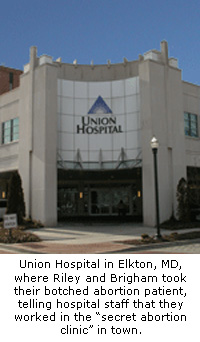
Once at the hospital, Riley and Brigham were said to have behaved strangely. Riley identified herself as a physician “that works at secret clinic that performs second trimester abortions in town.” (See Union Hosp Records*) Brigham did not identify himself and hung back from the conversations. Riley insisted that an E.R. doctor come outside and speak with her, which delayed D.B.’s care. Riley informed the E.R staff of the complication and of the medications the patient had been given, but was evasive about the time and dosage of those medications. After ten minutes at the hospital, Riley and Brigham returned to the “secret clinic” in Elkton and completed another abortion.
Meanwhile, the staff members at Union Hospital were shocked. Records indicate that the physicians were not aware of any abortion clinic operating legally in Elkton.
Union Hospital examined and evaluated D.B. and determined that the injuries she suffered were so severe that the decision was made to transport her via helicopter to Johns Hopkins Medical Center in Baltimore where she was rushed into surgery immediately upon her arrival. There, doctors removed the remains of her partially aborted baby from her abdominal cavity, removed and repaired part of her small intestine, and repaired a tear at the back of her uterus. (See Johns Hopkins Records*)
Elkton Police Arrive, Brigham Flees
Someone tipped off the Elkton police, because while Riley was finishing up her last abortion of the day, an officer arrived at the clinic and asked to speak with her. After the abortion was done, Riley spoke with the police. She presented her Utah drivers license and her Maryland physician’s license card.
Police asked if any other doctors were present. When she indicated that Brigham was there as well, police asked her to go get him so they could speak with him. To her surprise, when she went to notify Brigham that police officers wanted to see him, he had already fled the building, leaving Riley to deal with the increasingly tense situation with the police.
Riley resisted showing the officers around the clinic, citing “patient privacy” concerns. Finally she consented to walk the police through the building. Of that encounter Riley told the MDBP, “It was very kind of heated, I can actually say. And I said – I told them, you have to respect the patients’ privacy.”
She gave the police the website for Brigham’s American Women’s Services and his clinic license number and told them if they wanted more information, they would have to talk to the Voorhees office.
Police Raid Elkton
Riley’s next shift at Elkton was scheduled for August 20, 2010. Riley told the MDBP that she suspected that, based on the way she was “treated” in their previous encounter, the police may attempt to “impede procedures” on August 20. She arrived for her duty shift two hours early and remained in her car reading and drinking coffee.
Riley was approached by a plain-clothes detective who asked for her identification. Before she knew it, six squad cars had blocked both entrances to the clinic, including her vehicle. Even the Elkton Chief of Police was there.
The questioned Riley about “Maryland law and illegal criminal activity” and informed her that there was an open criminal investigation. Riley indicated that she either had to have an attorney present or they needed to let her go if she was not being arrested or subpoenaed. After about ten minutes, police allowed Riley to leave the scene.
She confided with the MNBP that she was anxious to get away from the police because she knew that Brigham was already in route from Voorhees, New Jersey, to Elkton, Maryland, with a caravan that included four women who were “active” and would need to have their abortions completed. Once free from the police, Riley says she called Brigham and told him that the police were at Elkton and that the women should be diverted to Baltimore. Riley rushed to Baltimore and readied the clinic for the late-term abortions. The caravan arrived about an hour after she did, and the four late-term abortions were done.
Riley admitted she arrived at Elkton early because anticipated the equivalent of a “picket line” of police and wanted to warn Brigham if that was so.
Open murder investigation
It was not until August 24, that Riley became aware that Brigham had been served with a search warrant for the Elkton clinic when he “casually” brought it up in conversation. Riley was stunned that the basis of that warrant was a open murder investigation. Riley was upset at Brigham for ducking out during the first police encounter, then for failing to notify her of the search warrant. She considered his conduct “unprofessional.”
In Maryland, there is no legal limit on when abortions can be done. However, if a pre-born baby is past viability and his or her life is taken in an illegal act, murder charges can be brought. (Md. Criminal Law Code Ann. § 2-103) Viability, as mention previously, is generally considered to be 24 weeks gestation.
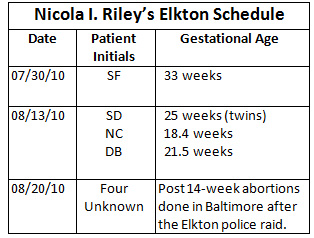
Abortion logs recovered from the Elkton clinic show that Riley was involved in an abortion on twins at 25 weeks on the day of D.B.’s abortion, and on a 33 week baby on July 30. The gestational ages of the babies aborted in Baltimore on August 20 after the police raided the Elkton clinic are unknown.
Those same logs show that between June 23 and August 13, 2010, 51 abortions were started in Voorhees, New Jersey, after the 14-week legal limit there and completed in Elkton, Maryland. Of those abortions, 15 were done on viable babies either by Brigham or at his direction.
Riley’s “Physician Independent Contractor Agreement” dated July 30, 2010, provides a pay scale for Riley’s abortion services up to 37 weeks gestation.
Based on these records, felony charges in New Jersey of illegal late-term abortions and murder charges in Maryland would be very appropriate.
But Brigham and Riley were not the only ones involved in this dangerous late-term abortion racket.
Cover for unlicensed practice of medicine
At Elkton, patients were greeted by an elderly gentleman who was purported to be the “Medical Director” for Brigham’s Maryland offices. George Shepard, Jr., 88, once did abortions for him at his Baltimore facility. Shepard claims to have a disability that makes him unable to do abortions and also prevents him from driving. Every Wednesday and Friday, Brigham’s staff would send a car and transport him from his home in Delaware to the Elkton, Maryland, clinic.
During an interview conducted by the Maryland Board of Physicians on August 19, Shepard seemed unclear as to his duties, which apparently included of signing off on orders for medications for the clinic every two or three months, monitoring the clinic’s refrigeration system, and to “make sure physicians that come in – that they do a good job.” For his time, which consisted of about eight hours per week, Shepard was paid $400.
Shepard told the Maryland Board of Medicine during a telephonic interview conducted on August 19, that he would observe Stephen Brigham doing late-term abortions at Elkton as well as training others to do them. He admitted that Brigham used Shepard’s medical and DEA license to order drugs. He understood that Brigham was not licensed in Maryland and was under the impression that he came to Elkton because New Jersey would not allow abortions after 14 or 15 weeks.
Brigham appeared to be using Shepard’s Maryland medical license to shield anyone from discovering his own lack of licensure in Maryland. All the logs and forms in Elkton indicated that Shepard was the physician of record, even though Shepard was incapable of patient care. It is clear that Shepard, even in his somewhat confused state, understood that his presence allowed others to break the law.
Because of his involvement in knowingly aiding and abetting in the unlicensed practice of medicine, Shepard’s Maryland medical license was suspended on an emergency basis on August 31, 2010, along with that of Nicola Riley. MNBP issued a cease and desist order to Brigham to immediately halt the unlicensed practice of medicine in that state. The New Jersey request for suspension of Brigham’s medical license came just eight days later.
Another record obtained from the Elkton clinic indicated that a “Dr. Woalker” [sic] was also somehow involved in patient care. That turned out to be Kimberly Walker, a young woman fresh out of medical school with an open medical license application in Maryland. Walker insists that her involvement at American Women’s Services, including the Elkton location, was on a “voluntary” basis that entailed observation only. She told the MDBP that she met Brigham in 2009 and he offered to train her to do abortions. In January, she began observing abortions done by Brigham at his Maryland clinics where he is unlicensed. She swears that she was never involved in patient care and does not know how her name ended up on the patient log. So far, the MDBP has taken no known action against Ms. Walker.
Why is this guy still in business?
Brigham has a long history of problems that span his entire medical career. Brigham lost his New York license after lacerating the cervix, uterine artery and uterus of a 20-year old patient and taking hours to realize it. The patient eventually suffered an emergency hysterectomy in what the Heath Department described as a ‘life-threatening’ incident in which Brigham did not seem to understand the severity of the situation.
His medical licenses have been revoked in Florida and allowed to lapse under controversy in Georgia. He allowed his California license to expire under a cloud of accusations of negligence. He spent 120 days in jail in 1998 for billing fraud.
In April, Brigham was slapped with more than $234,000 in IRS liens for non-payment of payroll taxes. State tax liens to which he is subject, could amount to tens of thousands of dollars.
Brigham also voluntarily surrendered his Pennsylvania license, yet keeps a string of clinics open there. In July of this year, the Pennsylvania Department of Health ordered Brigham to cease abortions at all clinics owned by him in Pennsylvania. To circumvent the order Brigham transferred ownership of the clinics to an elderly woman in Ohio who reapplied for and was granted clinic licenses, so Brigham’s clinics never missed a day of work.
New Jersey, the last state in which Brigham was still allowed to practice medicine, showed a history of disciplinary action taken against his license there. A New Jersey judge once ordered Brigham to stop advertising his abortions as “painless” and “safe.”
Operation Rescue has reason to believe that Brigham’s transfer was in name only and that he still controls and profits from the Pennsylvania offices even though that state has done all it can to keep Brigham from conducting his abortion business there.
Brigham claims to have his own minimum standards of practice, which are supposedly “consistent with the published standards of the National Abortion Federation.” (See Riley-Brigham Contract, pgs. 4-5) But Vicki Saporta, head of the NAF told reporters that, “His record is the most egregious one I know of in the field.” Saporta has hypocritically supported the closure of Brigham’s clinics even though her own NAF mills are known to operate at similarly low standards.
Operation Rescue wants criminal charges
Operation Rescue is urging criminal charges to be filed against Brigham in New Jersey and Maryland. Authorities tell OR that their investigations are “very preliminary” and that criminal charges have not been ruled out.
“Traditional discipline simply does not work with Brigham,” said Operation Rescue President Troy Newman. “He has learned well from his many encounters with the law how to evade it and how to play the system to avoid taking any responsibility for his actions that have left a trail of human misery across America over the course of four decades. We cannot rest until this criminal is behind bars where he belongs.”
That may be of some small comfort to D.B. and her mom, who were traumatized by their encounter with Brigham and his cohorts.
At the end of her interview with the MDBP, C.B. was asked if she had any more to add about her experience with Brigham on that August Friday the 13th.
“Well, you know, that’s all I know from Friday – from what I experienced that Friday – Last Friday. But I wish I never heard of them.”
*Records from Union Hospital and Johns Hopkins Medical Center were voluminous, so we have included only the relevant pages here.
